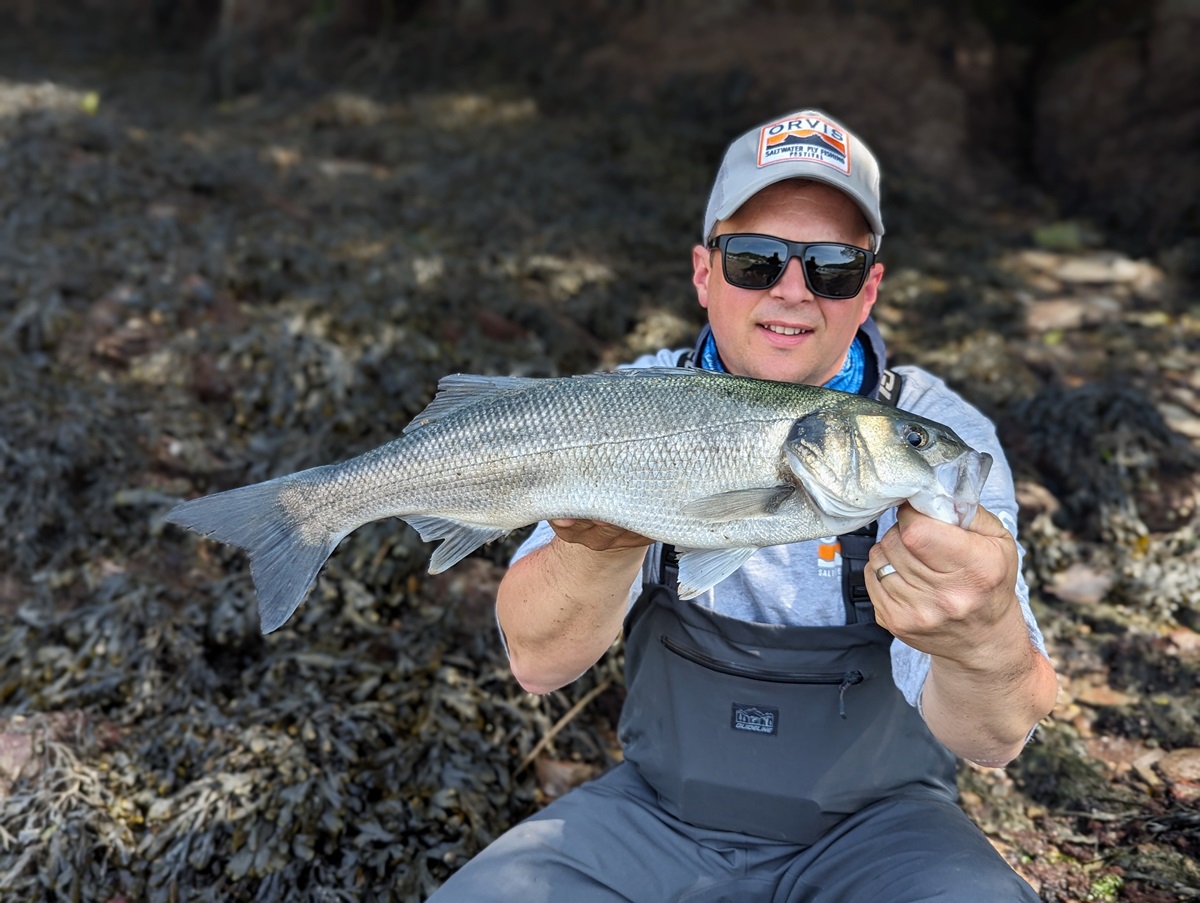Client Catches – The ‘Swimming’ Surface Lure…
Surface or top water lures account for 70-80% of my clients’ catches in daylight over a full season. Yes, that’s correct – 70-80%, which is a staggeringly high percentage when you think about it…
But if you’re new to bass lure fishing, and are perhaps ‘gulping’ in disbelief at the numbers above, to the extent that you’re currently champing at the bit to get back out there now that we’ve arrived at the stage in the season when the bass are more than happy to obliterate something zig-zagging, spitting, and/or zipping over their heads, just take a moment, as you replenish the lure box, to consider the ‘type’ of surface lure you might utilise…
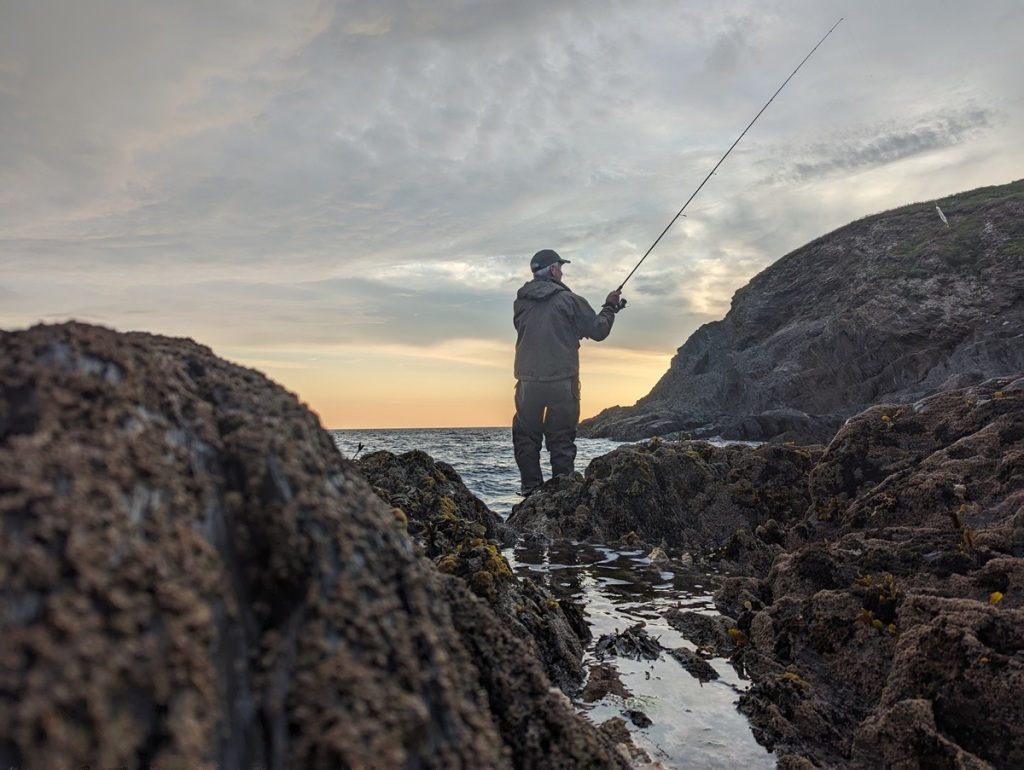
Flat calm?
In the course of my guiding, it’s not uncommon to receive a “Really?” or a “Hmmm, OK Marc” when I suggest to a client that he or she should attach a surface lure – the reason being a pre-conceived notion that the water needs to be flat, or oily-calm, to get the best out of them perhaps? Indeed, linking into my previous post here (that covers twilight and/or rough seas producing the apparent ‘optimum’ bass lure fishing conditions) a surface lure, with its ‘flash and splash’ has become the ‘go to’ lure when the Sun is high, and the sea is turquoise!
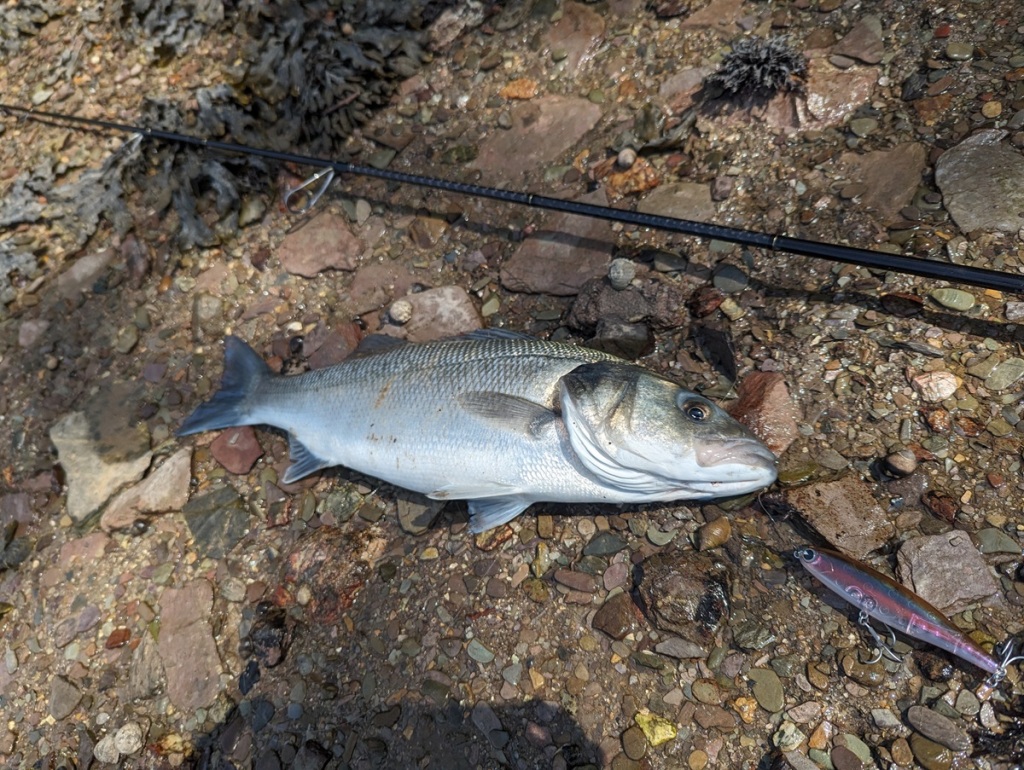
Types..
But without wanting to bamboozle you, there are many types of surface lure. Sure there’s the poppers and the sliders, but digging further into their intrinsic action(s), and you will encounter those that ‘skip, slither, meander, slide, snake, flick, and swim’… To simplify things a little, in the image below you will find what I would consider to be the following:
- A ‘skipper’ – The IMA Salt Skimmer (it skips across the surface)
- A ‘Swimmer’ – The IMA Chappy (it swims across the surface)
- A ‘Flicker’ – The Xorus Patchinko (it displaces and flicks water)
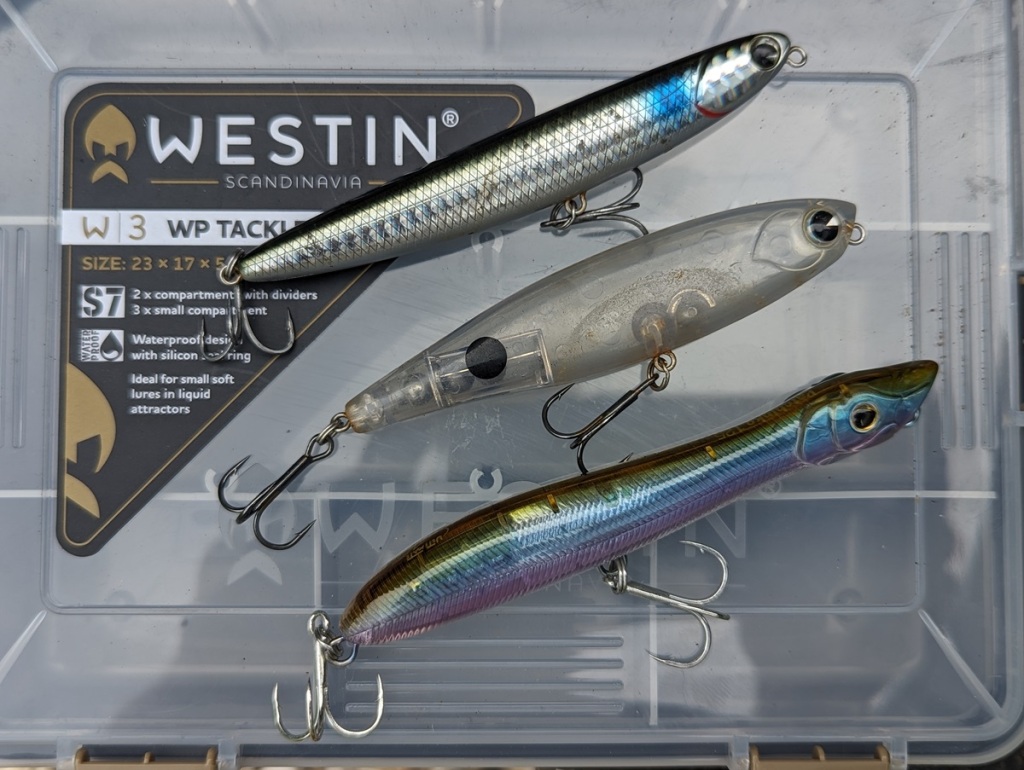
Assess
So, in what will be the first of three posts highlighting the bass-attracting qualities of the IMA Chappy 80 and 100 (as two more significant client captures have been achieved whilst using this excellent lure in addition to the one in the featured image and immediately below) it was because of its apparent ‘swimming’ motion that I attached one to Pete’s lure clip.
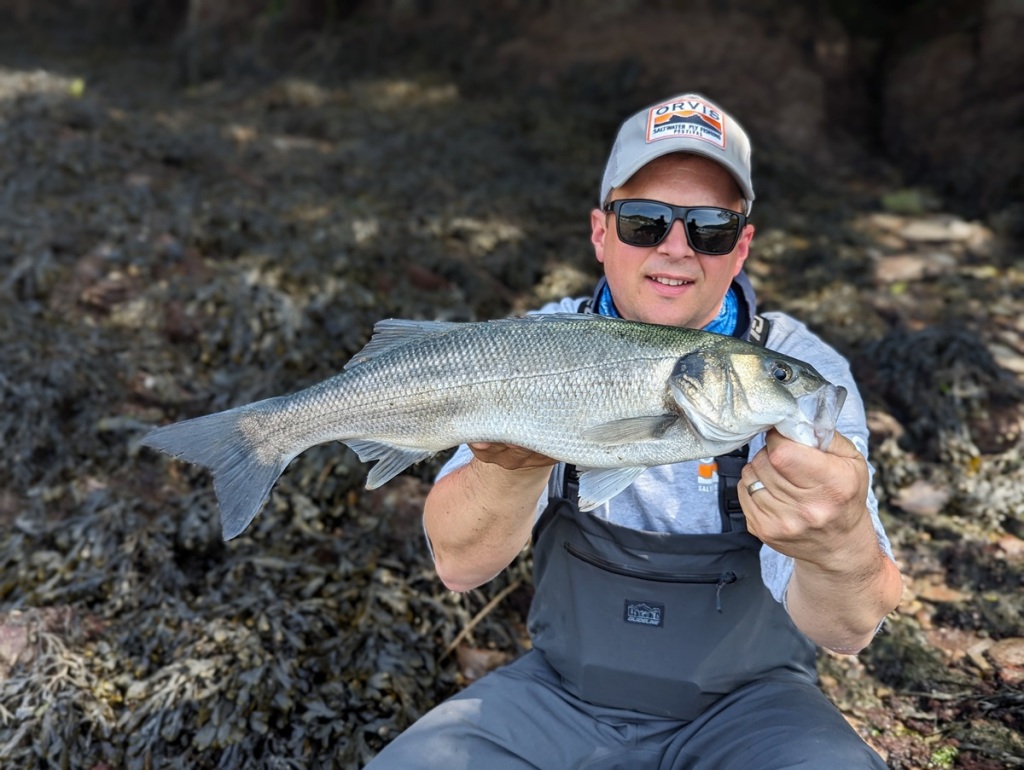
You see, one of the major benefits of guiding more than one person at a time, on the same mark, and of course, in the same conditions, is that as their guide, I can make an assessment of what the bass present may ‘want’ far more expeditiously than I would/could if I were guiding only one person. Apologies if that’s extremely obvious by the way!
Most certainly, there are occasions when the water (clarity or sea state), wind (cross, onshore or offshore), or overhead conditions (cloudy, dull, or bright) will dictate that a certain lure type needs to is utilised: a hard, diving minnow or a metal when the waves are crashing up a shingle beach on a wet day when the wind is in your face for example.
But more often, we will find ourselves in a position where I will perceive that it maybe prudent to operate with the same type of lure, but just a version that is doing something slightly different as discussed above. Moreover, if my clients are using precisely the same lure, then they will probably be working or retrieving it in a slightly different way – quicker, slower, with pauses, or a wider or a tighter action for instance…
Mimic a mullet
With all of the above in mind then, not for the first time this season, seemingly the most prevalent prey item on the menu were the immature, 3-6″ mullet that were regularly ‘topping’ and, you guessed it, ‘swimming’ on the surface… Where’s that IMA Chappy!
Of note, is that Pete’s brother (Dave) had already caught a small bass on a Megabass Zonk (a hard minnow with a prominent vane if you didn’t know) that he’d sneaked on while I wasn’t looking which was absolutely no problem. However, given the clear blue sky, and clear water washing this estuary mouth mark at the bottom of the ebb, I doubted whether anything bigger than a couple of pounds would be foolish enough to fall for its charms, simply because it was so obvious in these conditions – again, linking back to my previous post (here).
With Pete’s other brother (Mike) attempting to tantalise the bass with a Patchinko 100, it was down to Pete, who’d remained utterly steadfast in his determination to master the use of the IMA Chappy who ultimately prevailed. And what a take it was too! One of my favourites – a ‘blink of an eye, shot gun-sounding’ BOOOOOSH and she was on, landed, unhooked, photographed and returned before we replenished our energy levels ready for a night assault with one the finest evening meals I’ve enjoyed with a set of clients – just lovely.
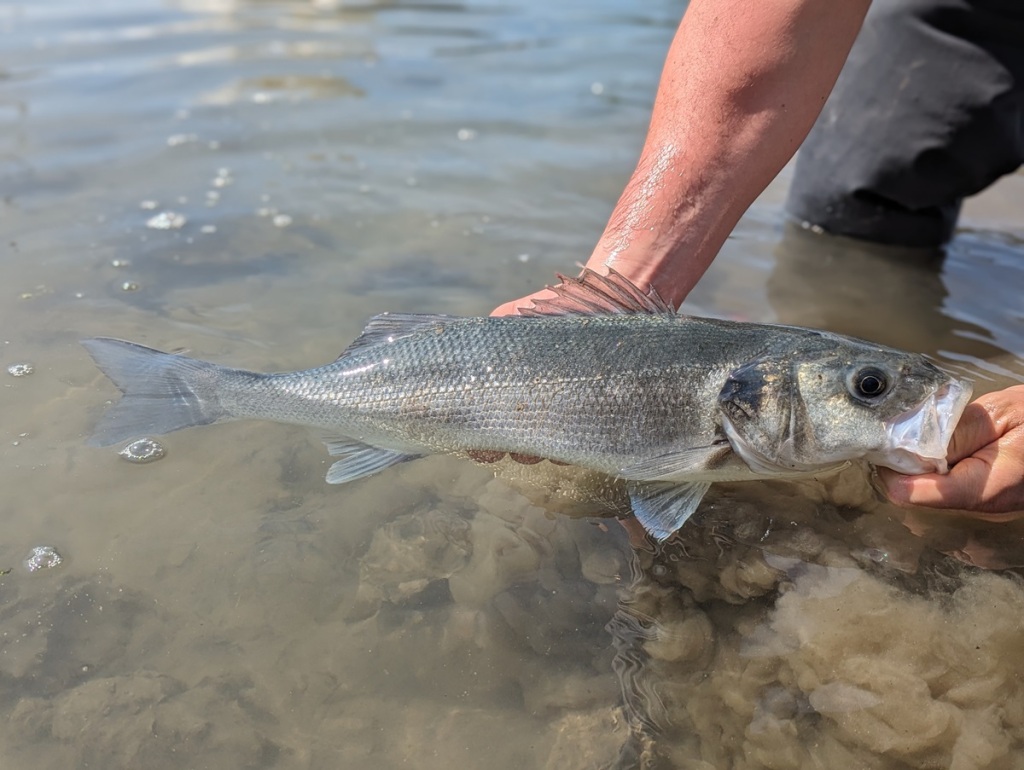
My Books
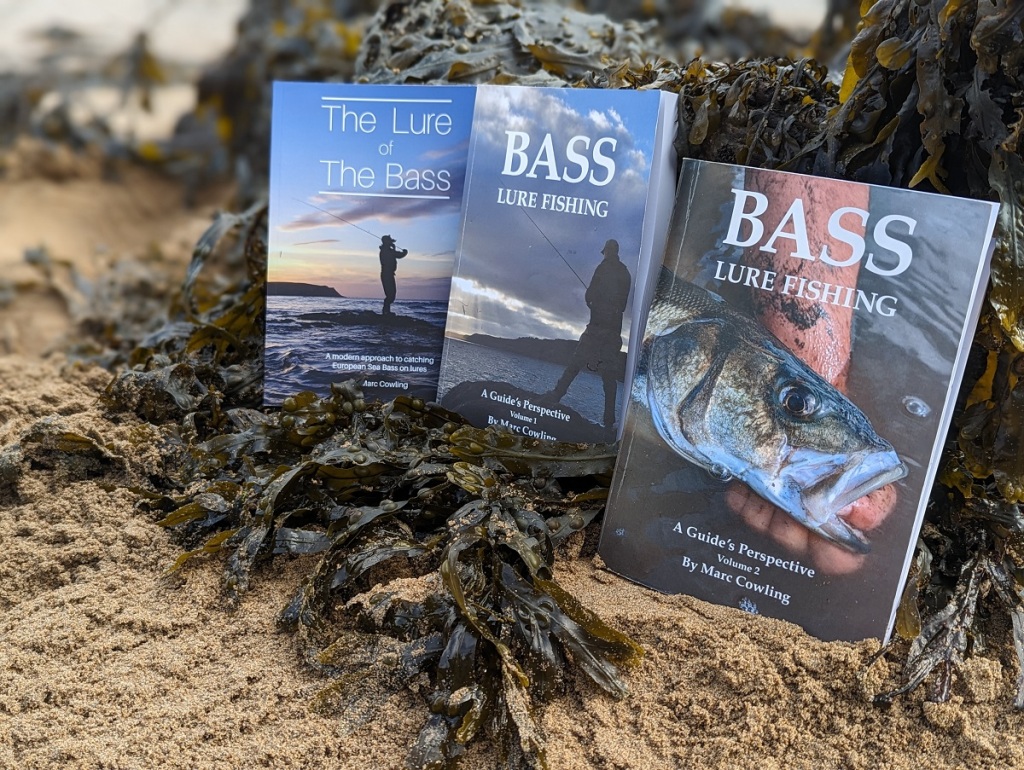
To find out more about my three books, that cover exclusively the ‘How, When and Where’ to catch bass on lures, from an all-encompassing range of environments, conditions, and lure types, I have written a blog post simply titled: ‘My Books – A Description of What is Encompassed Within Each…‘
Further, the availability status, in addition to PayPal payment buttons for each separate title can also be found via the link above. Alternatively, if you would like to enquire or indeed pay by BACS/Bank Transfer, then I can either be contacted via the Contact Form below, or via my email address at: marccowlingblf@yahoo.com
2024/2025 Availability

Personally, I am FULLY BOOKED for the 2024 season. However, as you may have read on an earlier post, I have meticulously trained a 2nd Guide who has access to my 400+ bass, lure fishing marks. He will be conducting sessions over the weekends throughout this summer and into autumn. He is already getting booked up quickly therefore, if you would like to enquiry about or wish to attain his availability then please utilise either the Contact Form below, or email me at: southdevonbassguide@yahoo.com.
Thanks for reading.
Marc Cowling


